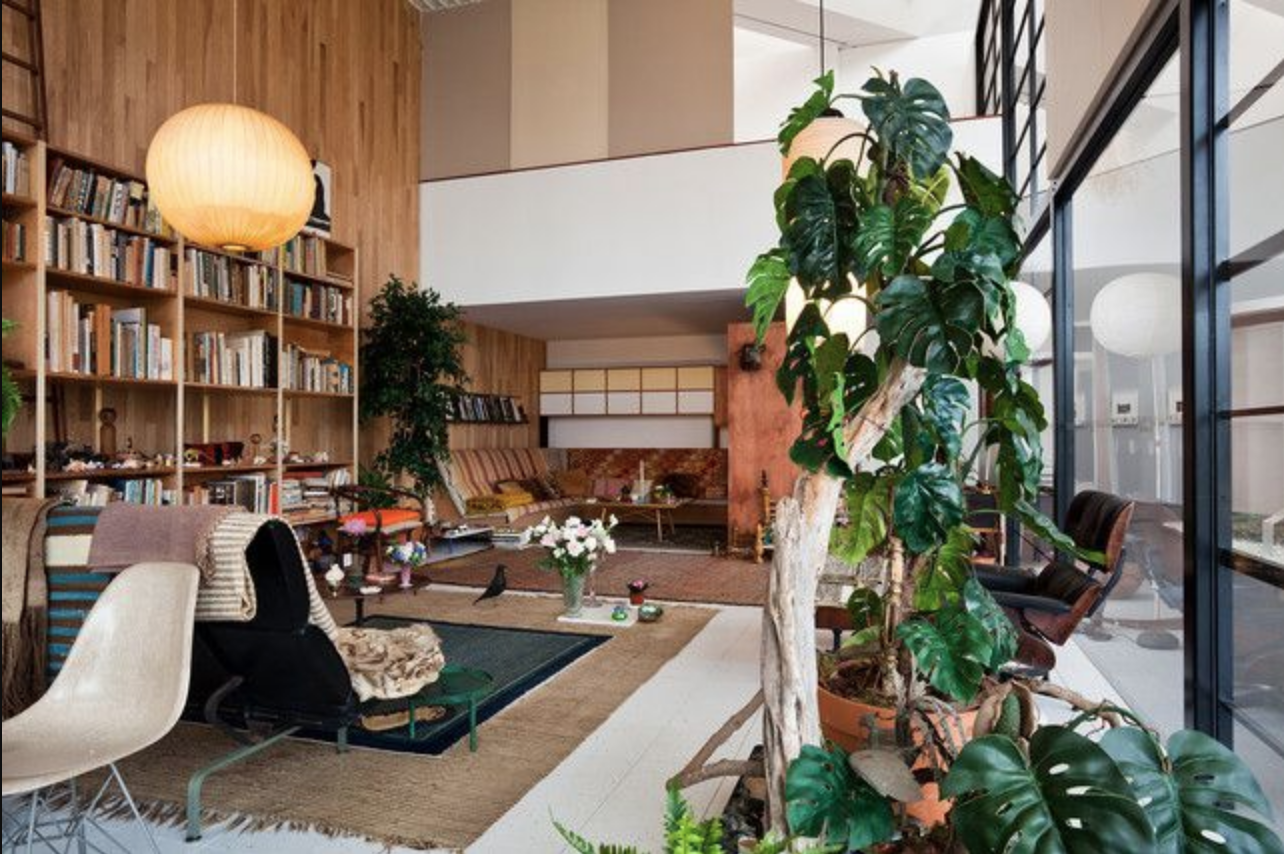Mid-century modern architecture and interior design, a movement that emerged in the mid-20th century (roughly from the 1940s to the 1960s), continues to captivate with its timeless appeal. Characterized by clean lines, functional designs, and a deep connection to nature, this style has influenced generations of architects, designers, and homeowners. Here’s a deep dive into the key aspects of mid-century modern architecture and interior design.
Key Elements of Mid-Century Modern Architecture
Mid-century modern architecture broke from the ornate, traditional designs of the past and embraced simplicity, openness, and a celebration of form and function. Open floor plans were a hallmark, promoting spaciousness and fluidity between rooms. The movement also celebrated the integration of indoor and outdoor spaces, emphasizing large windows and sliding glass doors to bring in natural light and views of the surrounding landscape. This seamless connection with nature was a key principle in mid-century modern design.
Notable Architects in the Movement:
- Frank Lloyd Wright – Known for his organic architecture and Usonian homes, Wright’s influence extended into mid-century designs with iconic works like Fallingwater.
- Richard Neutra – A pioneer of integrating architecture with the natural landscape, exemplified in the Kaufmann House.
- Charles and Ray Eames – While famous for furniture, their Eames House is a perfect example of mid-century modern architectural style blending with nature.
- Eero Saarinen – Known for his sculptural forms, Saarinen’s works, such as the Gateway Arch, exemplified organic shapes combined with modern design.
- Ludwig Mies van der Rohe – Famous for his minimalist designs and the principle of “less is more,” his works like the Seagram Building shaped modernist architecture.
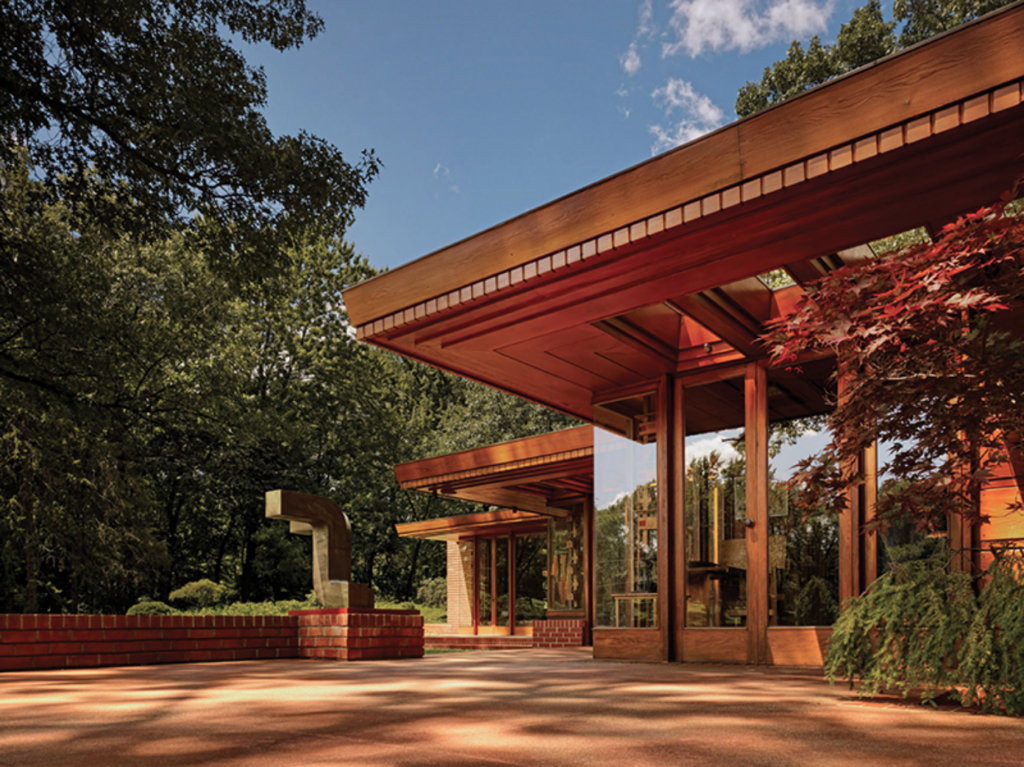
The Bloomfield Hills home by Frank Lloyd Wright
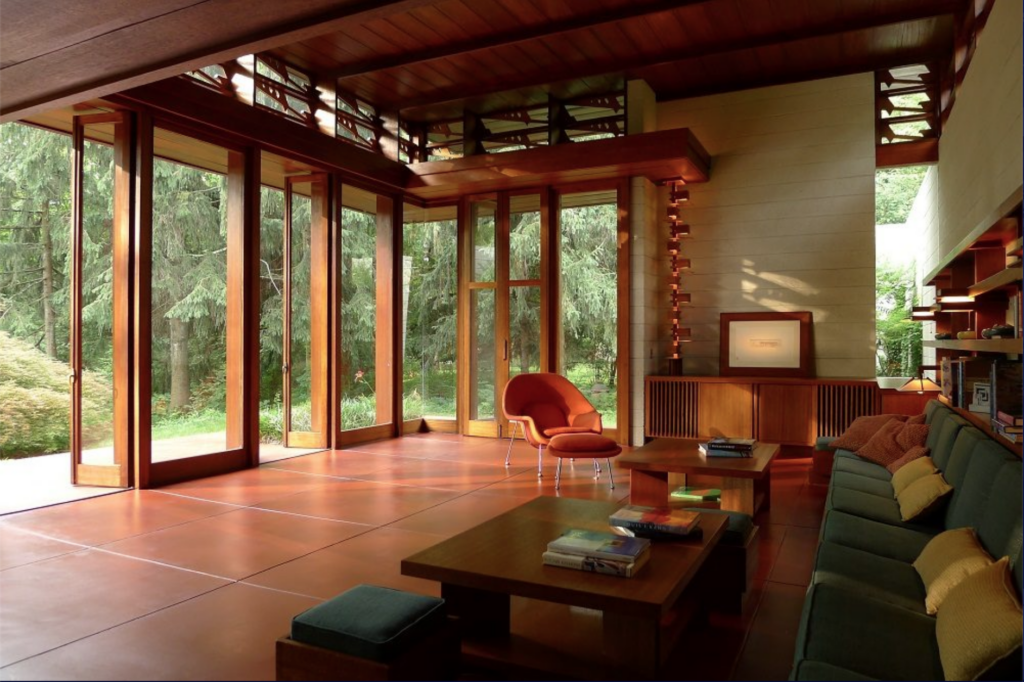
Bachman-Wilson House designed by Frank Lloyd Wright
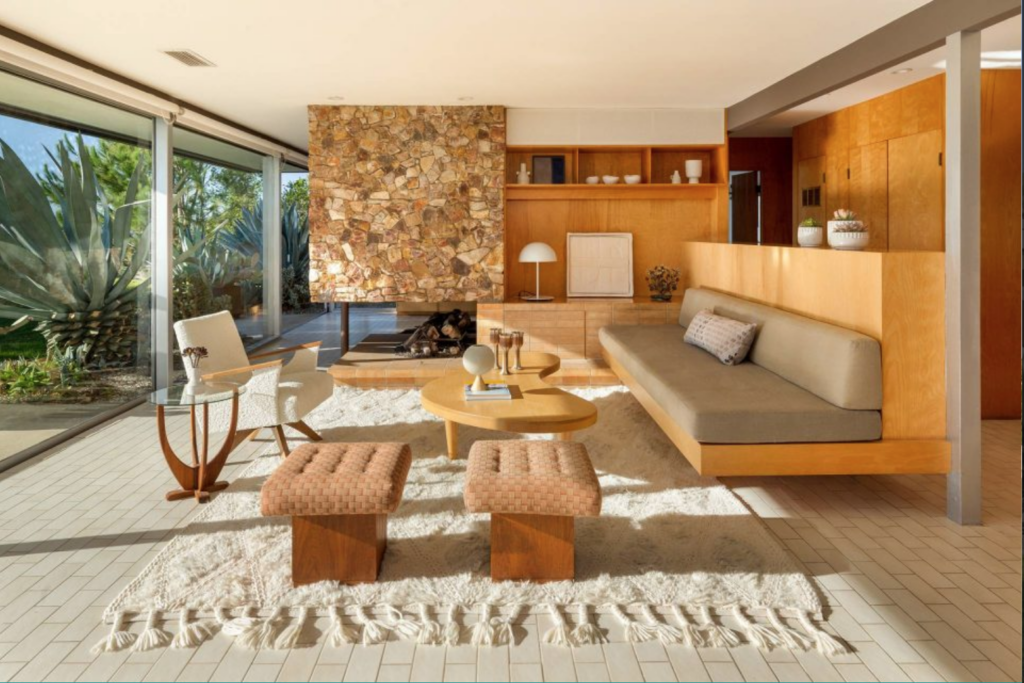
A classic modern design by Richard Neutra

A classic modern design by Richard Neutra
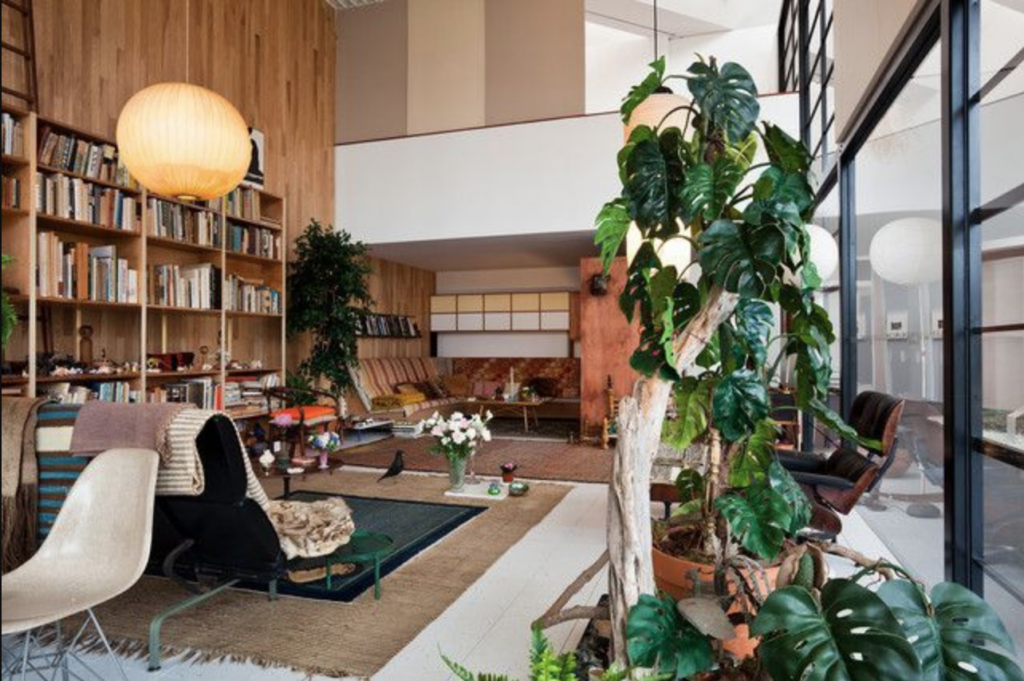
The Eames houses by Ray and Charles Eames
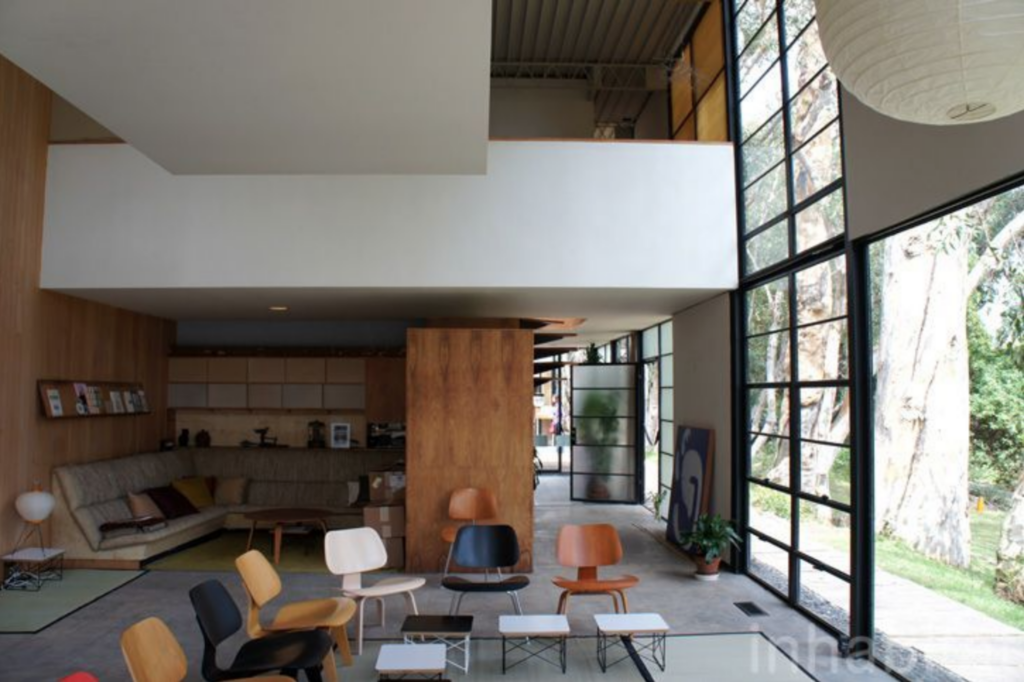
The Eames houses by Ray and Charles Eames
Interior Design in Mid-Century Modern Homes
Interior design in mid-century modern homes embraced minimalism, functionality, and an emphasis on clean lines. The era marked a rejection of heavy ornamentation in favor of simple, practical spaces. Furniture often featured geometric shapes, natural wood finishes, and vibrant, yet simple color palettes. Open shelving, multi-functional spaces, and built-in furniture were common to maximize space and efficiency.
Key Characteristics of Mid-Century Modern Interiors:
- Minimalist Furnishings – Sleek, functional, and low-profile furniture with tapered legs, such as Eames chairs and Noguchi tables, defined the look of interiors.
- Neutral Colors with Bold Accents – Interiors typically featured neutral tones like white, gray, and brown, with pops of bold color such as turquoise, mustard yellow, or burnt orange for accents.
- Natural Materials – Wood, leather, metal, and glass were common in both furniture and decorative elements, emphasizing warmth and texture.
- Innovative Lighting – Statement lighting pieces like the Arco floor lamp or Sputnik chandeliers became signature design elements of the mid-century modern era.
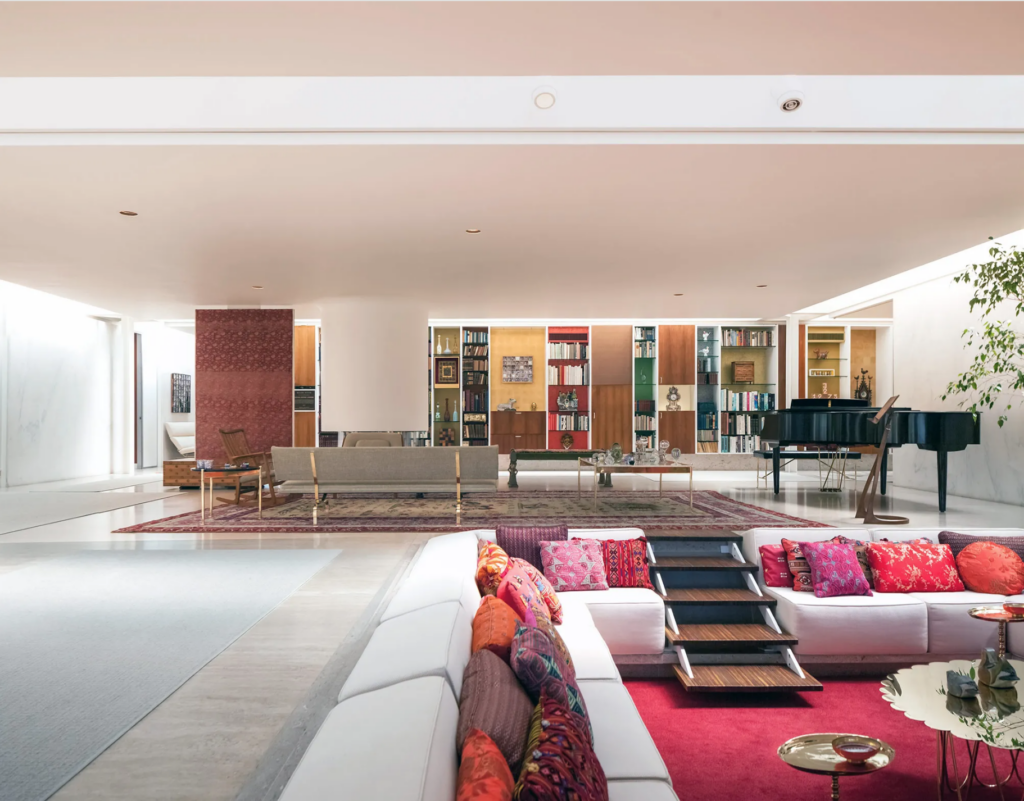
The Miller house by Eero Saarinen

Barcelona Pavilion by Mies van der Rohe
The Role of Landscaping in Mid-Century Modern Design
Landscaping was a critical part of mid-century modern architecture, as it enhanced the indoor-outdoor connection. Natural elements were integrated into the design, with expansive lawns, patios, and gardens that were simple yet functional. The idea was to create a harmonious transition between the interior and exterior, where gardens, courtyards, and open spaces flowed seamlessly into the living areas.
Notable Mid-Century Modern Landscapes:
- Eames House – Surrounded by lush greenery, this garden seamlessly blends the architecture with its natural surroundings.
- Stahl House – With its panoramic city views, the landscaping around this iconic property helps bring the outdoors in, creating a perfect blend of nature and modernism.
- Miller House – Designed by Eero Saarinen with landscape architect Dan Kiley, the garden features geometric lines and sculptural elements that reflect the modernist design ethos.
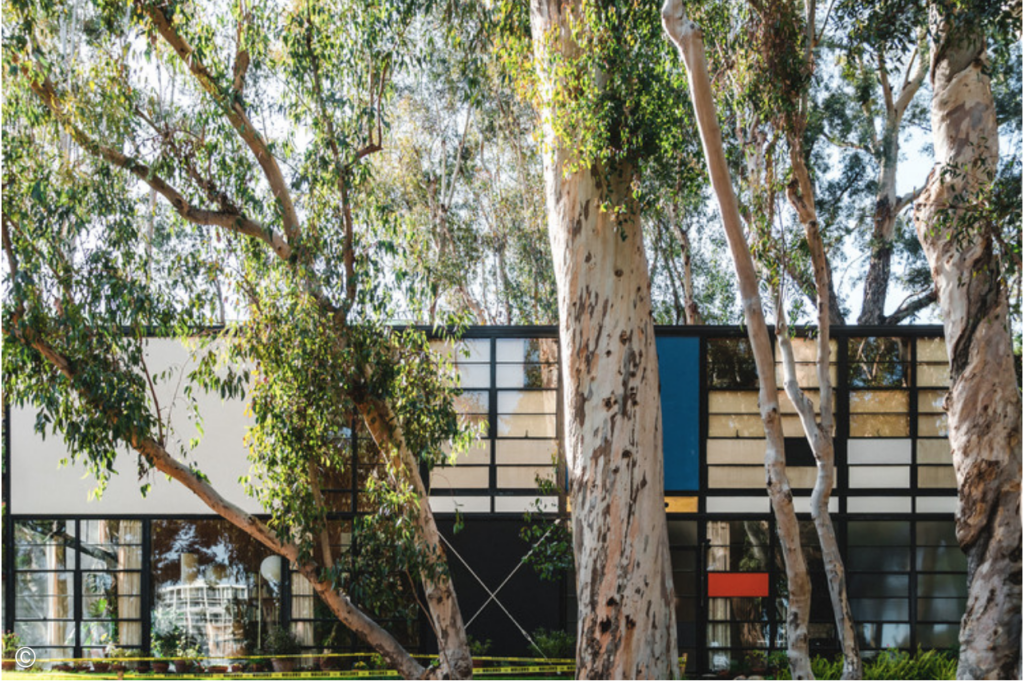
The Eames houses by Ray and Charles Eames
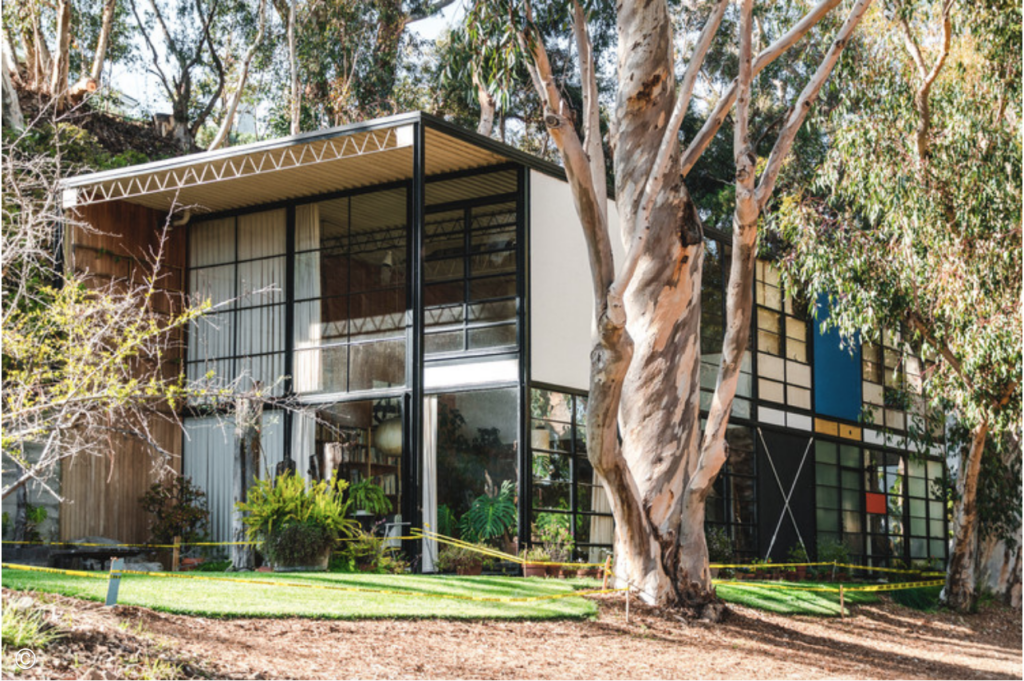
The Eames houses by Ray and Charles Eames
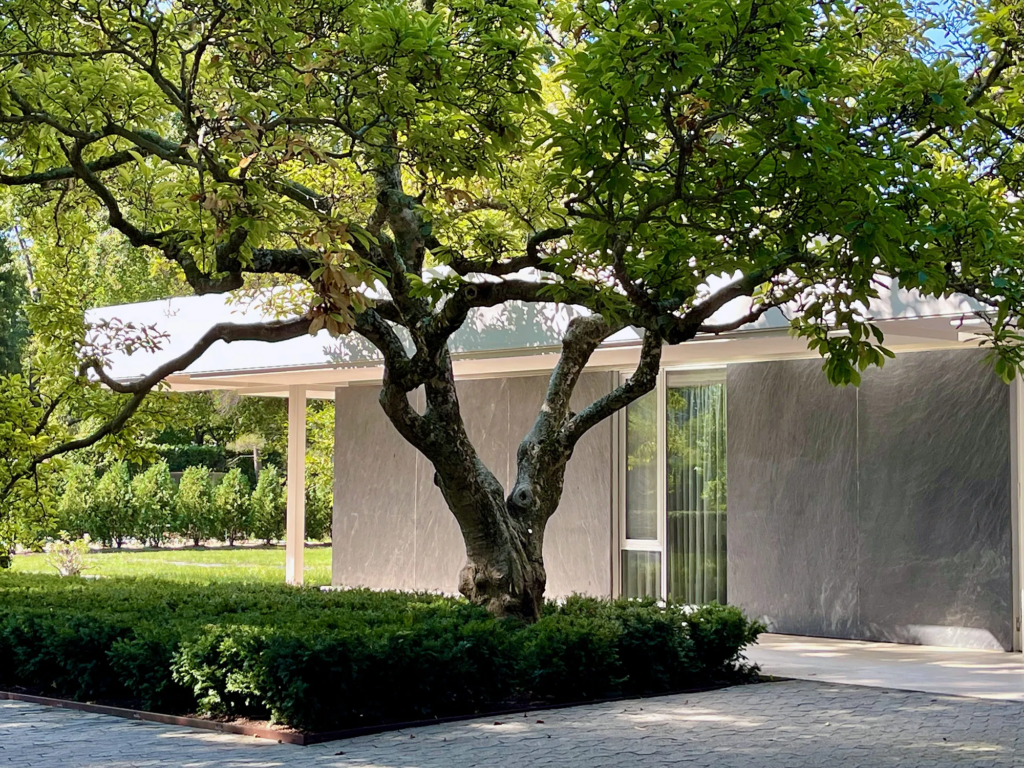
The Miller house by Eero Saarinen

The Miller house by Eero Saarinen

A classic modern design by Richard Neutra
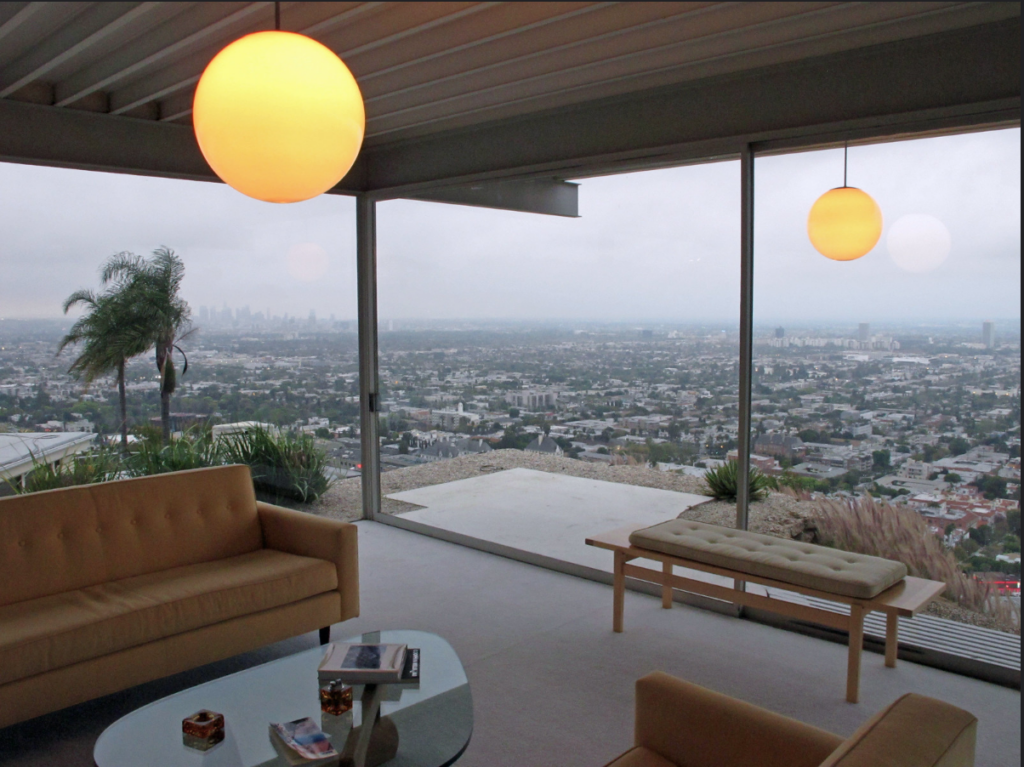
The Stahl house by Pierre Koenig
Popular Flooring Choices for Mid-Century Modern Interiors
Flooring was another essential element in mid-century modern interiors, chosen for its simplicity, durability, and ability to complement the overall minimalist aesthetic.
Key Flooring Materials:
- Hardwood Floors – Natural wood, such as oak or teak, was widely used for its warm, timeless appeal.
- Terrazzo – A composite material with marble or glass chips, terrazzo floors were often used in high-traffic areas for their sleek, polished finish and vibrant, speckled patterns.
- Concrete – Raw, polished concrete was a popular flooring choice in more industrial-style mid-century modern homes, creating a clean, minimalist look.
- Linoleum – Affordable and easy to maintain, linoleum in bold colors or abstract patterns became popular in kitchens and bathrooms.
- Stone and Brick – Natural materials like slate and flagstone were sometimes used in rustic or organic mid-century homes to create a grounded connection to nature.
- Carpet – Low-pile or wall-to-wall carpets in neutral tones added comfort and warmth to living spaces while maintaining a minimalist style.
- Vinyl Flooring – Often used in practical areas, vinyl came in various patterns and colors, adding durability and style to kitchens and bathrooms.
Conclusion: The Enduring Appeal of Mid-Century Modern Design
Mid-century modern architecture and interior design is more than just a style; it’s a philosophy that focuses on simplicity, functionality, and a harmonious connection to the environment. The movement celebrated innovative materials, clean lines, and an integration of natural elements, creating spaces that feel open, airy, and timeless. Whether it’s the architectural genius of Frank Lloyd Wright, the iconic furniture of the Eameses, or the thoughtful landscaping that ties everything together, mid-century modernism remains an enduring influence on contemporary design.
Incorporating these principles today can create spaces that feel fresh, functional, and visually striking, while maintaining a connection to the past. The movement’s ability to blend beauty with practicality ensures its lasting relevance and appeal across generations.
